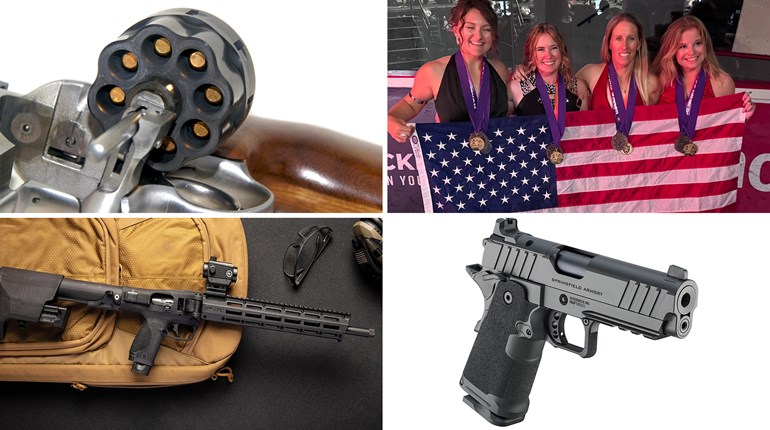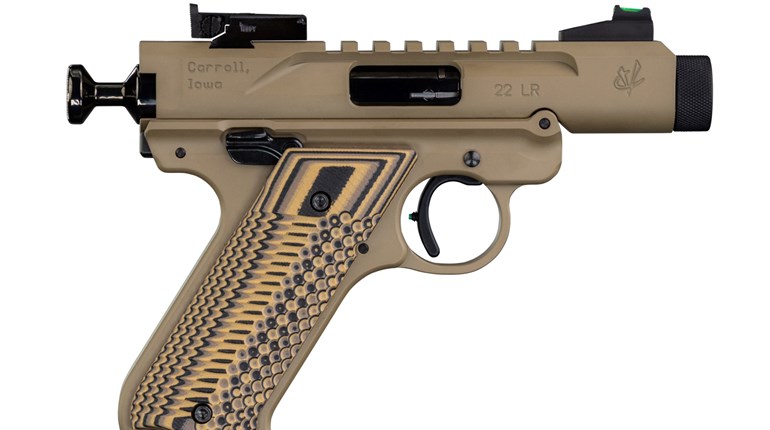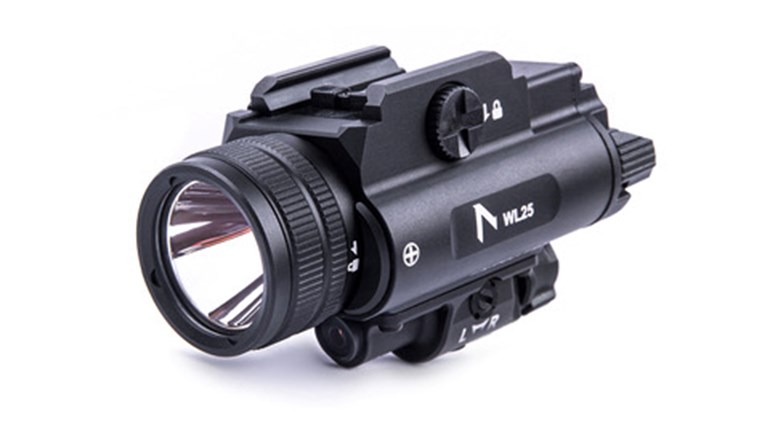
WARNING: All technical data in this publication, especially for handloading, reflect the limited experience of individuals using specific tools, products, equipment and components under specific conditions and circumstances not necessarily reported in the article and over which the National Rifle Association (NRA) has no control. The data has not otherwise been tested or verified by the NRA. The NRA, its agents, officers and employees accept no responsibility for the results obtained by persons using such data and disclaim all liability for any consequential injuries or damages.
Common knowledge has it that reloading .22 Long Rifle cartridges isn’t possible, or at least isn’t practical. But necessity being the mother of invention—in this case necessity being the present drought of .22 LR ammunition—American entrepreneurship has now added the rimfire cartridge to our reloading repertoire.Sharpshooter 22 Long Rifle Reloader, LLC accomplishes this with their .22 LR reloading kit, the heart of which is an old-school hand operated “tong” tool that serves both as bullet mold and bullet/case crimper. The company also sells a resizing die and shell holder separately, as well as the primer material. While all this may seem so simple that reloading rimfire cartridges should be as mundane is reloading .38 Special, the devil, as they say, is in the details.
Rimfire obstacles
Even the non-handloader is aware that the first obstacle to reloading .22 LR is the priming. Centerfire cartridges, of course, have easily replaced Boxer primer assemblies consisting of the pressure sensitive primer material and anvil integral with the primer cup. In the .22 LR, however, the cartridge case rim serves as the primer cup and anvil, the blow from the firing pin crushing the primer material between rim surfaces to ignite it. While it’s safe enough to ship self-contained primers, handling and shipping pressure sensitive primer material is another matter, and no primer manufacturer sells loose primer compound to handloaders.

The second obstacle is the .22 LR bullet itself. The .22 caliber bullets available to handloaders are unsuitable for .22 LR because the latter utilizes a heel base bullet; that is, the rear portion of the bullet is lesser in diameter than the forward, exposed portion of the bullet so that the heel fits inside the case. The exposed portion of the bullet is the same diameter is the .22 LR case and bore, .222,” whereas .22 caliber bullets for centerfire cartridges like the .223 Rem are .224” in diameter. Using such bullets in the .22 LR would cause the case to bulge so that it could not chamber, or if it did, the bullet would be .002” oversize for the bore.
Simple solutions
Sharpshooter solves the primer problem by shipping the material as separate, safely inert chemicals—which they call “Prime-All”—that become pressure sensitive only after the handloader mixes them together at the loading bench. The handloader overcomes the bullet obstacle by casting his own bullets with the provided combination mold/crimping tool. Let’s look at the bullet solution first.
Casting your own bullets can be as complex and expensive as you wish; lead furnace, lubrisizer & dies, molds, lead and alloying metals occupy a significant portion of my handloading space. But for reloading .22 LR it is as simple as melting pure lead, pouring it into the mold, and crimping the bullet into the case when cooled. There are a few safety precautions you must follow in safely working with melting lead, but the basic procedure is not difficult or expensive.
The Sharpshooter mold casts two different bullets, one a standard 38-grain round nose and the other a 25-grain pointed nose, each with a single lubrication groove. Shooting a few dozen unlubricated bullets per session during testing did not create a leading issue; while some casters treat bullet lube as an esoteric art, in this case anything reasonable—hand-wiping a muzzleloader patch lube or any semi-soft bullet lube on the bullets after seating, for example—will probably suffice.
The case priming step is the only one that will be new to experienced handloaders. First you must completely remove the fired primer residue from under the case rim with the kit’s brass scraping tool. Then, after mixing the primer chemicals according to instructions, dump about 1/3 to 1/2 of a small scoop (the kit’s plastic tool has a large scoop on one end and a small scoop on the other) into a case using the provided funnel. Add one or two drops of acetone and pack the priming “mud” TIGHTLY under the case rim with the square end of the scraping tool, being sure you distribute it evenly around the case rim.
After allowing the acetone to evaporate overnight add the propellant; the kit includes load data for several powders, including 700X and Unique as well as for Hogdon’s Pyrodex P black powder substitute. Now crimp a bullet in place and you’re ready to shoot.
Caveats
A couple of caveats are in order here:
1) The crimping tool only works with .22 LR cases, not .22 Shorts or Longs. Sharpshooter co-owner Brian Nixon said the company is examining also making crimping tools for reloading .17 rimfire cartridges.
2) The die and shell holder sold separately nearly doubles the cost of the kit, but resizing may not be necessary if you shoot your reloads in the same chamber in which they were originally fired. In my testing the rims of CCI brass cases would not fit in the shellholder.
3) The bullet making and priming process is such that you aren’t going to crank out hundreds of rounds of “blasting ammo” in a single reloading session. However, your overall cost will only be about 80 cents per box of 50/$8 per brick while gun shops must charge $5 per box and scalpers are demanding $75 per brick at gun shows.
4) You may experience some misfires as you develop your own handloading techniques. If so, first examine your priming process; be sure you are mixing the chemicals in the proper ratios and TIGHTLY packing and evenly distributing the material under the case rims. You will save bullets by first loading clay or wax “wadcutters” without powder to test your priming technique.
5) If the firing pin strikes exactly on top of the dent in the rim caused by the previous strike, you may experience a misfire. Reorient the case so that the strike falls elsewhere on the rim, or follow included instructions for removing the dent from the case rims.
Shooting results
Handloading for competition is synonymous with precision. So far in testing I have not found reloading .22 LR to provide what we would call “target precision,” most likely due to the difficulty in working with such tiny quantities of priming compound and powder: a small deviation in a 1-grain .22 LR powder charge has far more significance in performance than the same error in a 48-grain .30-06 powder charge. Also, I did not lubricate most bullets or sort bullets to discard those less-than-perfect. Further testing with attempts toward precision may show improvement.
However, with the scarcity of .22 LR ammunition continuing – and the $2.50-per-box days gone forever when it is available—handloaded .22 LR still has applications for competitors as inexpensive practice ammo. Beyond that, it is a source of ammunition for introducing new shooters—one of our most important responsibilities—to shooting sports. Reloading can also serve as an educational activity to share with youngsters, and it offers us an insightful appreciation for what goes into making consistent factory ammunition.
And it provides an opportunity for generating puzzled looks the next time someone asks, “Got any .22 LR?” and you respond with, “Well, I’ve got some reloads…”
Kit price is $74.95. Die and shell holder are $59.95. Enough Prime-All to load approximately 2,000 rounds is $19.95. For more information, visit http://22lrreloader.com/.



































